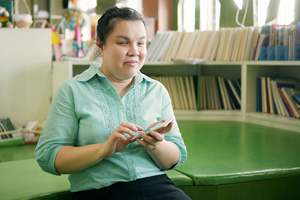
Web accessibility is “the inclusive practice of ensuring there are no barriers that prevent interaction with, or access to, websites… by people with physical disabilities, situational disabilities, and socio-economic restrictions on bandwidth and speed.”
Not only is it the law under the Americans with Disabilities Act, but it’s also recognized by the UN Convention on the Rights of Persons with Disabilities as a basic human right.
Accessibility is for everybody
Accessible “websites, tools, and technologies are designed and developed so that people with disabilities can… perceive, understand, navigate, and interact with the Web [and] contribute to the Web.”
Additionally, accessible web design does not only benefit those with disabilities, but also “supports an organization’s ability to innovate, enhance their brand, increase market reach, and minimize legal risk – among many other benefits,” research shows.
Examples of accessibility practices include:
Is your website compliant?
Higher education administration, especially in admissions and records and academic services, relies heavily on technology and people’s ability to use it. How do we ensure that our digital resources are accessible for all who want to do it?
Start with this how-to checklist for tips and guidelines, and consider a 508 test for your site.
Join the webinar
Join the AACRAO webinar “Digital Accessibility Best Practices” on October 1. Naomi Porper (UC Boulder) and Ellen Clark (UW-Madison) will lead the session and provide guidance from their institutional perspectives, and attendees are invited to share challenges and successes with implementing practical and effective accessibility options.
At CU Boulder, accessibility is stressed in all of its technology, and campus resources are leveraged to ensure this happens, including the digital accessibility lab; but it wasn’t always this way. A Department of Justice inquiry served as an inflection point for the university to shift away from a broadly reactive approach on accessibility, to proactively seeking accessible solutions and minimizing the need for case-by-case accommodations.
At UW-Madison, faculty and staff have come to recognize the value added to the institution by creating an accessible and user friendly digital space. Utilizing the unique vantage point of students, faculty and stakeholders, the university developed a user-interface for course enrollment that is a prime example of accessibility that sets a standard all other new developments can follow.
Learn more and register now.